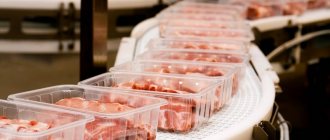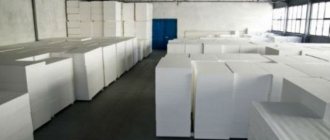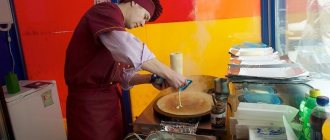Any person strives to surround himself with many little things that provide him with a comfortable existence. This desire often manifests itself in relation to personal care products that are used repeatedly throughout the day. In addition to shampoo, toothpaste and soap, their list also includes toilet paper.
At the same time, the availability of technology allows even a novice entrepreneur to organize his own production of toilet paper: the business plan of such an enterprise may include both manufacturing products from scratch and cutting the finished paper web. Economic calculations show that the first option has the highest profitability, but a beginner planning to implement it needs to be prepared to invest several million rubles in the business.
Business Features
Modern consumers are accustomed to the convenience of using toilet paper. According to rough estimates, the average family uses one or two rolls per week. Accordingly, in a city with a population of 300 thousand people, at least 100–150 thousand rolls are sold weekly, which in monetary terms is 1.5–2.5 million rubles.
At the same time, the greatest competition is observed in the segment of high-quality imported products and expensive multilayer products from large domestic factories, while the niche of budget products is divided between two or three local manufacturers. Taking advantage of this situation, a novice entrepreneur can set up his own workshop for the production of inexpensive toilet paper and occupy a fairly prominent place in the regional market.
Before implementing this business idea, you need to evaluate your financial and organizational abilities, and then choose the appropriate enterprise format:
- Incomplete cycle. The raw material used is a ready-made base for the production of toilet paper, which is supplied in the form of large reels 140–170 cm wide and weighing up to 300 kg. In this case, the list of workshop equipment is limited to machines for rewinding webs, cutting rolls and packaging finished products;
- Full cycle. The company independently produces raw materials for toilet paper by processing waste paper or cellulose. This option for organizing a business is the most profitable, but at the same time the most expensive: the cost of the simplest production line starts at two million rubles.
When thinking about what kind of production can be opened in 2021, many entrepreneurs pay attention to the positive aspects of such a business:
- Products of any price category are goods of everyday use and, with good sales organization, are sold in large volumes;
- The shelf life of products is practically unlimited, so the manufacturer and seller do not have to worry about delays and write-off of substandard balances;
- If sales channels are available, significant investments in the purchase of machines for the production of toilet paper pay for themselves within a year;
- Raw materials cost literally pennies, which allows you to set a high markup on finished products, sometimes reaching 400–500%.
On the other hand, making money from the production of personal hygiene products also has some disadvantages, which also should not be forgotten:
- Due to the ease of toilet paper production as a business, there are already a huge number of businesses of varying sizes operating in the industry;
- To launch a workshop, it is necessary to invest several million rubles in purchasing and setting up a production line.
Types of toilet paper
As a personal hygiene product, toilet paper appeared in China about one and a half thousand years ago.
But this product became widespread only in the mid-19th century, when an enterprising businessman from New York offered the market an inexpensive product in the form of square sheets packaged in packs. Another fifty years later, other American manufacturers first produced the product in rolls. Since then, toilet paper technology has advanced significantly. The modern product has acquired such useful characteristics as:
- Perforation, making it easier to tear sheets off the roll;
- Ability to absorb moisture well;
- Low density in the range of 20–35 g/m²;
- Low strength and loose structure;
- Rapid destruction in an aquatic environment;
- No harmful dyes.
Today, two types of raw materials are used in the production of toilet paper, which significantly affect its consumer qualities.
Such materials include:
- Waste paper. Recycled paper has a stiffer structure and a grayish tint. Products made from it have the lowest cost;
- Cellulose. Fluffy cellulose fibers are used to make soft white paper with a multi-layer structure. These products are comfortable and safe.
Nowadays, it is difficult to seduce a consumer accustomed to abundance with the low price of toilet paper made from waste paper or the high quality of goods made from cellulose. Therefore, in the struggle for sales, manufacturers had to think about additional competitive advantages of their products, which were:
- Decoration. To obtain a more attractive appearance, some manufacturers add dyes to the raw material or cover the surface of toilet paper with various patterns, ornaments, embossing and corrugation;
- Aromatization. Treating a product with pleasant-smelling fragrances is another marketing technique used by manufacturers. To avoid allergic reactions, only the bushing is impregnated with the aromatic composition.
Raw materials for toilet paper
Of course, cellulose toilet paper not only looks attractive, but also has important consumer advantages - softness, comfort, and hygroscopicity.
However, a novice entrepreneur does not always have the opportunity to find reliable suppliers of high-quality material, and therefore it is more advisable to start a small business by processing more affordable waste. Almost any waste paper is used as a raw material for the production of toilet paper, which dissolves well in water and does not contain insoluble residue in the form of spines, hard covers or polymer coatings. According to GOST 10700–97, suitable paper waste is classified as follows:
- MS-1A. Waste white paper (except for newsprint), writing paper, whatman paper, drawing and sketching paper. Price - from 8,000 to 12,000 rubles/t;
- MS-2A. Waste white paper, writing paper, ruled or striped forms, drawing or drawing paper with markings. Price - from 6,500 to 10,000 rubles/t;
- MS-5B. Waste corrugated cardboard, packaging from household appliances. Price - from 4000 to 8000 rubles/t;
- MS-6B. Waste of printed household cardboard (with the exception of shoe, roofing or electrical cardboard). Price - from 4000 to 8000 rubles/t;
- MS-7B. Old books, magazines, booklets, posters, notepads and other items with printing, without spines or covers. Price - from 5000 to 9000 rubles/t;
- MS-8V. Newsprint paper, old and new newspapers with a print density of no more than 5%. Price - from 3500 to 7000 rubles/t.
The mini plant processes a large volume of raw materials per day. Accordingly, even when making toilet paper at home, an entrepreneur must responsibly approach the issue of uninterrupted supply of waste paper to production. There are two options to solve this problem:
- Find suppliers. Entrepreneurs who own waste paper collection points usually cooperate with wholesale resellers. Large networks can work directly with factories. It's worth trying to offer them a higher price;
- Open your own collection point. If you open a pavilion for receiving waste paper, you can avoid dependence on intermediaries and receive raw materials on favorable terms. To organize a collection point, it is enough to have a garage and a car.
In addition to waste paper, other components are also used in the production of toilet paper - special harmless glue, cardboard for the production of sleeves, labels in rolls and plastic film for packaging.
Toilet paper market analysis
The profitability of any commercial project depends on the successful sale of manufactured products, and toilet paper is no exception. It is clear that there is no point in opening your own store selling toilet paper; such products are sold through chain stores and supermarkets. Such trading has both its pros and cons.
The main advantage: retail chains are large intermediaries, capable of selling large production reserves (for a “newbie” in business it is quite possible to agree on batches of up to 50-70 tons/month). That is, products will not accumulate in the warehouse, production runs smoothly.
The main disadvantage: the trade “share” of supermarkets is at least 30%, and in order for your products to be successfully placed, it’s all 50%. Naturally, this implementation is more suitable for significant volumes of large plants. For small businesses, it will be more profitable to cooperate with large wholesale stores or create their own dealer network to service stores and outlets selling household goods in the region.
There are two options for organizing a toilet paper production business:
- full production - a technological process based on recyclable materials (waste paper), the output is ready-made packaged rolls of toilet paper;
- simplified mini production - the basis is cellulose raw materials, which are rewound on special equipment, and then cut into rolls familiar to everyone and packaged.
The second option is less profitable, since the cost of such a “semi-finished product” significantly exceeds the purchase price of recyclable materials and, accordingly, reduces the possible profit. In addition, paper recycling volumes in Russia today account for about 15% of the actual amount of waste and, despite quite decent competition, this business is more promising.
Therefore, we will consider the first option for organizing production.
Toilet paper production technology
To properly organize the work of an enterprise and optimally select machines, a businessman must study the technology of toilet paper production. The process looks like this:
- Waste paper is loaded into a receiving tank and filled with clean water. In order for the raw material to become saturated and sour, the mass is stirred periodically;
- The paper soaked in water is sent to a pulping plant, where under the influence of jets of water it turns into a homogeneous suspension;
- The mass is filtered through a sieve to remove debris, metal parts and undissolved fragments;
- The raw material enters the paper pulp preparation tank, where it is additionally enriched with water to a given concentration;
- The finished mass is poured into a receiver, which provides a continuous supply of raw materials for the papermaking machine;
- In the paper machine, the suspension is laid out on a conveyor mesh table, which transfers it to the area of the squeezing and sizing rolls;
- Excess water flows through the mesh into the pit, and the wet paper pulp is glued to a cloth conveyor, which transfers it to the dewatering and drying area;
- The drying drum is evenly heated to 110°C, as a result of which the tape loses 60–70% of moisture. Steam is removed with an exhaust hood;
- In the creping zone, the tape is separated by a special knife from the drying drum and falls onto the felt, where it is pressed by the drying drum;
- The finished paper web is supplied to the receiving device and wound into reels with a width of 140 to 170 cm (depending on the type of equipment);
- The reel is installed in an unwinding machine, which rewinds it into logs - rolls of the same width with a thickness equal to the thickness of the finished roll;
- At the same stage, if necessary, multilayer paper is glued or embossed on its surface;
- A label is glued onto the finished log, after which it is cut on a belt or disk machine into rolls of a given width;
- Rolls with labels are packed in boxes or sealed in polyethylene, 4–12 pieces each. Finished products are transported to the warehouse.
Manufacturing technology
A full-fledged toilet paper production plant operates according to a seven-stage process flow.
Preparation of raw materials
Waste paper is cleaned of impurities, crushed using a crusher, adding water. The resulting wet mass goes to a sieve for filtering - impurities and unnecessary inclusions that were missed during the initial cleaning remain there.
Waste paper washing
The resulting wet mass, after cleaning, is fed into a special tank - there it is washed with circulating and tap water. This stage is considered one of the most important in the technological process, since the thoroughness of washing determines the quality of the product in the future, as well as the cost, which takes into account the cost of water supply.
The longer the resulting mass is washed, the whiter the future paper will be. Dirty waste water goes into the sewer.
TwinPulp III type waste paper de-fibering unit
Grinding
After thorough washing, the raw materials are sent to a multifunctional mill. There, the mass along with water is crushed and fed into a pressure tank. Again, the more thorough the grinding, the fewer noticeable impurities will be in the resulting product, but the cost per roll will also be higher.
Proportion adjustment
After crushing and transferring the raw material to a pressure tank, it is sent to a container to regulate the proportional composition of water and raw materials in the resulting mixture. When the desired ratio of liquid to paper is reached, the mass is poured in even portions onto a table located on the paper-making machine.
Manufacturing of blanks
At this stage of production, the raw materials arrive in the form of a suspension. A nylon mesh allows the mixture to be dehydrated - the same mesh serves as a conveyor belt. Excess liquid enters the reservoir and is then used for flushing as recycled water.
The resulting mass moves along a conveyor into a drying drum, which rotates ten times per minute and is heated by steam at the temperature of water evaporation. The paper pulp dries in a moving drum, then it is removed with a special knife in the form of ribbons.
The cut tapes undergo final drying, after which they need to be wound onto bushings. Then they are cut into blanks for rolls.
Embossing
The workpiece obtained at the previous stage is fed to the unwinding machine. Here the embossing is applied and the tape is immediately wound onto a log - its width is equal to the width of a regular reel, but the diameter corresponds to a roll of toilet paper.
Rewinding is carried out to give the fabric a structure - two-layer or three-layer, and to increase the density of the resulting roll.
Package
For the last stage, you will need to pre-order the label from the printing house. The log obtained after unwinding and embossing is pasted over with this label and cut into small rolls - the cutting is done on a cutting machine.
Finished rolls are checked by weight, packed in polyethylene bags or boxes - in this form they are ready for transportation and sale.
Business registration
What is better for the production of toilet paper - LLC or individual entrepreneur? This business does not imply the presence of any legislative restrictions, and therefore it is wiser to use a cheaper and simpler form - individual entrepreneurship. The following OKVED code is suitable for classifying the type of activity of an enterprise:
OKVED code for toilet paper production
| 17.22 | Production of paper products for household, sanitary and hygienic purposes |
During the registration process, the entrepreneur must indicate his preferred taxation system. Enterprises with up to 15 employees have the right to apply a patent at a fixed rate of 7,400 rubles per month. But for a larger workshop, the optimal simplified tax system is 15% of the difference between revenue and expenses.
When preparing a package of documents for an enterprise, you should also take into account that sanitary and hygienic products are subject to certification. To produce toilet paper in Russia, it is necessary to issue a Certificate of State Registration, and then obtain a Declaration of Conformity GOST R. In addition to these certificates, an entrepreneur will also need officially registered barcodes to sell their products through retail chains.
But you don’t need a license to make toilet paper from waste paper. The fact is that the processing of recyclable materials of hazard classes I–IV requires licensing, while paper waste belongs to class V. However, to avoid problems, you should obtain a certificate from Rosprironadzor indicating the class of materials used.
Starting a business
Many manufacturers, both domestic and foreign, operate successfully in this segment. Every year, production volume increases by at least 5-7%, and statistics show that consumers are increasingly choosing more expensive and high-quality products. All this makes it possible to find a niche in the market to sell the product.
The production of toilet paper is profitable, with minimal costs and quick payback.
First of all, before starting production, an entrepreneur must carefully study consumer demand in the region - it is necessary to find out how much buyers are willing to pay, and which product is preferable to them.
Toilet paper can be anything - with cardboard or plastic sleeves, without sleeves at all, single-layer and multi-layer, smooth, embossed, multi-colored, flavored, etc. Modern industry can satisfy the needs of any buyer, however, the most popular and economical is still plain white paper without embossing or flavorings.
Thus, to open you will need:
- Register an enterprise - individual entrepreneur or LLC.
- Find and rent premises for production activities.
- If necessary, carry out repair work.
- Purchase equipment.
- Hire staff.
- Get started.
IMPORTANT! Opening a production workshop takes on average 2-4 months.
Enterprise registration
You can engage in the production of toilet paper as a private entrepreneur (IP), however, for more efficient work and cooperation with large chains, becoming an LLC is the best option.
To start production you will need:
- Documents on state registration of an enterprise - certificates of assignment of the status of an individual entrepreneur or the opening of an LLC (opening will cost the entrepreneur 10,000 rubles).
- License to carry out activities for the production of toilet paper (cost 140-150 thousand rubles).
- Certificate confirming the compliance of raw materials with GOST. The sale of products that do not have a quality certificate is prohibited and faces penalties.
- Permission from the fire safety service.
- SES permission.
Range
Modern technologies make it possible to produce not only the most ordinary toilet paper (white, single-layer), but also its more complex versions - paper with several layers, different cores, adding patterns, colors and embossing.
In addition, the technological process for making toilet paper is practically no different from the technology for making paper towels for the kitchen or hygiene, as well as table napkins.
All this expands the possible range of the enterprise.
Material
Raw materials for the production of toilet paper are divided into 2 types:
- Sanitary cellulose base.
- Waste paper.
The base consists of rolls weighing from 100 to 600 kg and 1-2 meters wide. However, the base can be produced independently, if you have a paper machine.
Bushings must be purchased separately, as well as packaging materials and labels.
The production of paper from waste paper is a more profitable business. For this purpose, the following types of recyclable materials can be selected:
- MS-10 – newspapers.
- MS-7 – cardboard.
- MS-3 – books and magazines.
- MS-2 – white paper with lines.
- MS-1 – white paper.
Premises requirements
The production premises must have the following characteristics:
- Area of at least 150 meters.
- Ceiling height is at least 4 meters.
- The ability to divide it into 3 zones: a warehouse for materials, a place for equipment, a warehouse for finished products.
- Availability of three-phase power supply.
- Availability of water and sewerage.
Enterprise employees
The number of employees directly depends on the planned production volumes, but in general you will need:
- Workshop workers - at the rate of 4 people per shift.
- Technologist.
- Storekeeper.
- Driver.
- Accountant.
In some cases, it is cheaper and more efficient to contact an outsourcing company and use their accounting services than to hire a full-time specialist.
A significant advantage of employees will be their high qualifications and regular professional retraining.
Preparing the premises
When looking for a place to locate a workshop, you must be guided by sanitary standards, which require a distance of 100 m to the nearest bodies of water and residential buildings. Therefore, it is better for an entrepreneur to use some kind of hangar or warehouse on the outskirts of the city, where the rent does not exceed 200–300 rubles/m² per month.
To set up an enterprise with a capacity of 2–5 tons of products per day, a room with an area of 150 m² is sufficient: toilet paper production lines designed specifically for small businesses are small in size. The workshop space should be divided into:
- Waste paper acceptance and storage area;
- Warehouse for packaging and other raw materials;
- Production area;
- Warehouse of finished products;
- Administrative and service premises.
When preparing a workshop for the production of toilet paper, it is necessary to fulfill certain requirements imposed by manufacturers of technological equipment and various regulatory authorities. So:
- For the correct placement of machines, the length of the production room must be at least 15 meters;
- Installation of the paper machine and the exhaust hood above it requires a ceiling height of at least 4 meters;
- The energy consumption of steam equipment for making toilet paper is 55 kW. The power of electric mini-factories is from 135 kW;
- The supply power line must provide power to machines and devices with voltages of both 220 V and 380 V;
- The workshop must be connected to water supply and sewerage, which will ensure the supply and removal of water in a volume of at least 3 m³ per day;
- The air temperature in the production area at any time of the year should not fall below 16°C and rise above 25°C;
- The exhaust hood above the paper machine must provide effective removal of water vapor;
- The workshop foundation is poured in accordance with the equipment manufacturer's diagram. A recycling water supply pit with a volume of 5–8 m³ is installed in the floor;
- The production of toilet paper from waste paper is considered a fire hazard, so the workshop is equipped with a fire extinguishing system and fire extinguishers.
Technical characteristics of some production lines
Finished production lines are divided into two types according to the technological process:
- equipment for production from finished raw materials is the most affordable and simplest option;
- mini-plant for recycling waste paper - includes a set of mechanisms for preparing paper raw materials. This option is more complex, but includes all stages of the production process, and significantly reduces the cost of production.
In Russia you can find equipment not only imported, but also domestically produced, new and used.
Rewinding machine YD-E
For example, the automated complex ALBP-1 (NIKA, Russia) is designed for the production of toilet paper from waste paper. Characteristics:
Automatic line ALPB-1 LLC "NIKA"
- productivity – up to 4 tons per shift;
- power – 20 kW;
- required power supply – 380 V;
- required premises – 200 m2;
- cost – 8,000,000 rubles.
A more budget-friendly version of a complex for the production of toilet paper, but without a line for recycling waste paper, is the ZS-E-1380 model. Characteristics:
- productivity, logs per minute – 6 pcs.;
- power – 5.5 kW; Rewinding machine ZS-E-1380
- dimensions: length – 5050 mm;
- width – 2600 mm;
- height – 1800mm;
Electric mini-factory for the production of toilet paper from recycled materials from Russia, Omsk.
Omsk Paper Mill
Specifications:
- output – up to 1000 kg per shift;
- power – 160 kW/h;
- service – 4 people;
- required production area – 150 m2, ceiling height – 4 m;
- cost – 1,900,000 rubles.
Equipment for the production of toilet paper
Finding equipment for the production of toilet paper is not difficult - there are models of both Russian and Chinese production on the market.
Domestic lines have a higher cost, but their manufacturers include installation, commissioning and warranty service in their offers. So how much do toilet paper machines cost? A budding entrepreneur should pay attention to inexpensive units from the Omsk Paper Mill. For example, a steam line for recycling waste paper with a price of 2.2 million rubles has the following technical characteristics:
- Line capacity - 2000 kg/day;
- Energy consumption - 35.7 kW;
- Low pressure steam consumption - 300 kg/hour;
- Clean water consumption - 3000 l/day;
- Maintenance personnel - 4 people per shift.
The equipment specification for a mini-plant built on the basis of the specified line may look like this:
Equipment for paper production
| Name | price, rub. | Quantity, pcs. | Amount, rub. |
| Mini steam plant included: | 2200000 | 1 | 2200000 |
| Pulper | – | 1 | – |
| Return water pump | – | 1 | – |
| Waste paper pump | – | 2 | – |
| Paper making machine | – | 1 | – |
| Rewinding machine 1400 mm | – | 1 | – |
| Roll cutting machine | – | 1 | – |
| Optional equipment | |||
| Steam generator | 158000 | 1 | 158000 |
| Bushing machine | 94500 | 1 | 94500 |
| Packaging machine | 130000 | 1 | 130000 |
| Paper pulp preparation tank 5 m³ | 110000 | 1 | 110000 |
| Tank of finished paper pulp 15 m³ | 160000 | 1 | 160000 |
| Clean water tank 5 m³ | 90000 | 1 | 90000 |
| Ventilation dome | 40000 | 1 | 40000 |
| Pipelines and valves | 30000 | 1 | 30000 |
| Warehouse scales | 20000 | 1 | 20000 |
| Pallet truck | 15000 | 1 | 15000 |
| Fire extinguishing system | 50000 | 1 | 50000 |
| Fire extinguisher | 3500 | 4 | 14000 |
| Switchboard | 6500 | 1 | 6500 |
| Total: | 3118000 | ||
In addition, production cannot operate effectively without administrative staff. Therefore, in addition to purchasing machines for making toilet paper, an entrepreneur should take care of arranging workplaces for the director, accountant and sales manager. For these purposes you need to purchase:
Other equipment
| Name | price, rub. | Quantity, pcs. | Amount, rub. |
| Office table | 3200 | 3 | 9600 |
| Chair | 750 | 10 | 7500 |
| Computer | 20500 | 3 | 61500 |
| Printer | 6600 | 1 | 6600 |
| Telephone | 1250 | 2 | 2500 |
| Router | 2000 | 1 | 2000 |
| Stationery | – | – | 6000 |
| Document rack | 3300 | 1 | 3300 |
| Meal table | 1500 | 1 | 1500 |
| Wardrobe | 2500 | 3 | 7500 |
| Total: | 108000 | ||
Equipment with incomplete and complete production process
The cost of a line for the production of toilet paper from waste paper at a full cycle depends on the required power, but in any case it is required:
- warp making machine, consisting of:
- electric generator;
- crushers (for shredding waste paper);
- sieves (for separating clips, paper clips, etc.);
- mills (for grinding waste paper and turning it into a mass with water);
- washing devices (waste paper is washed with running water);
- cleaners (the proportions of waste paper and water are regulated);
- mesh table (nylon mesh in the form of a conveyor belt);
- drying drum (drying at a temperature of 110°C);
- scraper knife (cuts the dried mass into ribbons);
- device for drying and winding;
- unwinding machine (applies embossing, forms a structure (layers) and rewinds the workpiece into a log);
- machine for cutting rolls;
- packaging machine.
The cost of equipment for the production of toilet paper with a complete technological process is approximately 2 million rubles.
If you produce toilet paper from a ready-made base, you will need:
- rewinding machine for the production of toilet paper;
- cutting machine;
- packing table
The entire set costs approximately 850 thousand rubles. If you produce embossed paper, you will need a perforation unit. Additionally, it is advisable to buy a machine for making bushings costing 110,000 rubles.
Video on the topic:
Review of a semi-automatic machine for making toilet paper
Automatic line operation
Chinese equipment
Enterprise employees
Of course, even a small workshop cannot be compared with a mini-production in a garage employing two or three people: just servicing a paper-making machine requires hiring at least four specialists. Unfortunately, in the regions it is not always possible to find employees with experience working on similar equipment, as a result of which the entrepreneur will have to think about the prospects for additional training for people with technical education. In general, the enterprise needs:
- Shift Supervisor. Coordinates the work of production personnel, checks the quality of raw materials and finished products, monitors the correct operation of process equipment;
- Production workers. Their tasks include loading waste paper, servicing machines for the production of toilet paper, winding cardboard cores, cutting blanks into rolls, packaging finished products;
- Support workers. They are engaged in the delivery of raw materials to the installation, delivery of finished products to the warehouse, maintenance and refueling of the steam generator, loading and unloading of the company’s vehicle;
- Storekeeper. Receives and weighs raw materials delivered from suppliers, keeps records of the consumption of fuels and lubricants and packaging, and issues finished products to the warehouse;
- Delivery driver. Brings raw materials from suppliers and delivers finished products to wholesale buyers, shops and supermarkets;
- Sales Manager. Searches for wholesale buyers, enters into cooperation agreements with them, and controls accounts receivable;
- Accountant. Maintains financial records, calculates salaries, submits necessary documents to the tax service and funds.
To produce toilet paper in two shifts, it is necessary to form two teams of workers. Accordingly, the staffing schedule of the workshop will take the following form:
Enterprise employees
| Job title | Rate, rub. | Qty | Amount, rub. |
| Shift Supervisor | 22000 | 2 | 44000 |
| Plant maintenance worker | 18000 | 8 | 144000 |
| Worker on a bushing machine | 18000 | 2 | 36000 |
| Worker at packaging machine | 18000 | 2 | 36000 |
| Helper worker | 16000 | 4 | 64000 |
| Storekeeper | 16000 | 2 | 32000 |
| Delivery driver | 20000 | 1 | 20000 |
| Sales Manager | 23000 | 1 | 23000 |
| Accountant | 23000 | 1 | 23000 |
| Payroll tax | – | – | 126600 |
| Total: | 23 | 548600 | |
Product release
The technology for producing toilet paper includes several stages, from purification of raw materials to packaging of finished products.
This process works as follows:
- Paper waste is prepared for recycling. They are cleaned of impurities, then water is added and crushed. The crushed mass is dried and filtered through a sieve. This allows you to get rid of unnecessary inclusions - paper clips, clips, etc.
- The purified mass is sent to the washing tank. The properties of the resulting product depend on this procedure. The quality and speed of washing affects the color and cost of the product. Waste water is drained into the sewer.
- The washed raw materials are diluted with clean water and crushed by a multifunctional mill to obtain a water-paper mass. After which it is sent to the water tank.
- The resulting semi-finished product is transferred to a special container to adjust the proportions of water in the composition. If necessary, remove excess moisture.
- The next stage is the production of roll blanks. Using a nylon mesh, the paper pulp is squeezed out. Excess water is reused in production. The paper is sent to dry, where it is heated at the same time. The resulting tapes are cut, completely dried and rolled into rolls.
- The finished bobbins are sent to the unwinding machine. This is required to create layers of toilet paper and give density to the roll.
- The result is a kind of paper tube, which is cut into rolls in accordance with the parameters of the desired width. They are weighed, packaged and sent to store shelves.
The production equipment is a special conveyor. It comes with automatic or semi-automatic operating mode.
Promotion and sales of products
As a business, the toilet paper industry requires promoting its own brand. The image of any brand consists of a memorable name, logo and bright, eye-catching packaging. In addition to developing the visual component, you need to work on the product range. The initial data necessary for this can be obtained by studying the local market and identifying the types of products most in demand among the target audience.
No less important for the mini-production of toilet paper is the organization of sales: in fact, the workshop must sell one and a half to two tons of products per day. Therefore, when developing a strategy, you should focus on wholesale buyers: you can interest them with the help of dumping prices and discounts when ordering large volumes of goods. To find such partners use:
- Cold calls. You need to call every day the heads of all distribution companies, wholesale warehouses and warehouses in the region, offering them profitable cooperation;
- Newsletters. Commercial offers should be sent to both prepared and unprepared clients using regular and e-mail;
- Publication of advertisements. It is necessary to place information about your products in special catalogs for wholesalers;
- Negotiation. It is recommended to negotiate with the owners of retail chains and supermarkets about including their products in the assortment of their outlets.
How much does it cost to produce toilet paper?
To draw up a business plan for the production of toilet paper, it is necessary to estimate the total amount of investment in the enterprise, not forgetting the purchase of raw materials for work, payment for certification procedures and installation of equipment:
Investments in toilet paper production
| Name | Amount, rub. |
| Enterprise registration | 800 |
| Opening a bank account | 2600 |
| Rent during installation of equipment 150 m² | 60000 |
| Preparing the premises | 60000 |
| Technological equipment | 3118000 |
| Other equipment | 108000 |
| Delivery and installation of equipment | 220000 |
| Certificate of state registration | 29000 |
| GOST Certificate of Conformity | 6000 |
| Receiving barcodes | 5500 |
| Gazelle car | 430000 |
| Diesel fuel for steam generator 7040 l | 208500 |
| Fare | 30000 |
| Waste paper 37 t | 332640 |
| Glue Dextrin 924 kg | 92400 |
| Cardboard for sleeve 2640 kg | 84480 |
| Paper label 528 kg | 68640 |
| Plastic packaging | 49500 |
| Household expenses | 10000 |
| 60000 | |
| Connecting utility networks | 25000 |
| Total: | 5001060 |
The total amount looks quite impressive for a beginner. Unfortunately, even strict savings cannot reduce it by more than a million rubles, and therefore it is better for an entrepreneur who is strapped for money to consider other ways to earn money and think about what kind of production to open with minimal investment at home with little capital.
Moreover, in the process of work, you also have to make many payments every month. When calculating the amount of regular costs, it is important to remember that in addition to raw materials and packaging, the enterprise needs fuel, water and electricity: Video on the topic
Toilet paper production costs
| Name | Amount, rub. |
| Salary Fund | 548600 |
| Account management | 1500 |
| IP contributions | 2700 |
| Rent 150 m² | 30000 |
| Electricity 12320 kWh | 75000 |
| Water supply 44 m³ | 3000 |
| Diesel fuel for steam generator 7040 l | 208500 |
| Fare | 30000 |
| Waste paper 37 t | 332640 |
| Glue Dextrin 924 kg | 92400 |
| Cardboard for sleeve 2640 kg | 84480 |
| Paper label 528 kg | 68640 |
| Plastic packaging | 49500 |
| Dryer cloth | 5000 |
| Household expenses | 10000 |
| 50000 | |
| Total: | 1591960 |
Financial calculations
Let's draw up a rough business plan for the production of toilet paper. Let's determine the main expense items. We will calculate profits and payback periods.
How much money do you need to invest to organize production?
- 2 million rubles — approximate cost of equipment.
- 200,000 rub. — re-equipment of the production workshop.
- 150,000 rub. — obtaining licenses, preparing documentation.
Let's calculate the costs for 1 month of production.
- 75000 rub. - rental of premises.
- 600,000 rub. — the cost of raw materials for the production of toilet paper.
- 20,000 rub. - public utilities.
- 80,000 rub. - wages for workers (4 people).
- 30,000 rub. — purchase of additional equipment.
- 60,000 rub. — transportation of goods.
- 10,000 rub. - Unexpected expenses.
Total:
- Costs for purchasing equipment and setting up the production cycle - 2 million 350 rubles.
- Costs for 1 month. production process - 875 tr.
Payback of a toilet paper business
Now let's calculate the return on business.
From 30 tons of waste paper, we get 272,500 rolls (the weight of one roll is 110 g).
When the price of finished products is 5 rubles. per roll, we get 272500*5 = 1 million 362 tr.
Taking into account production costs, we get 1 million 362 thousand rubles. — 875 t.r. = 487 t.r. profit per month. Based on our calculations, the payback period will be about five months. If we take into account all the associated costs, the profitability of such a business will be about 10-15%. Based on these data, the real payback period is 1 year.
How much can you earn from toilet paper?
How much can you earn from toilet paper? To calculate the gross profit of an enterprise, it is necessary to estimate the total volume of production:
- Without violating the requirements of GOST 52354-2005, it is possible to produce rolls 50 m long and 10 cm wide. The weight of one product will be 140 grams;
- With an equipment capacity of 2 tons/day, a mini toilet paper manufacturing plant operating in two shifts will produce 12,000 rolls per day;
- With a working month of 22 days, the output volume will be 264,000 units;
- The assortment will consist of a roll without a sleeve with a wholesale price of 6.50 rubles, and packed in polyethylene in 4 pieces. roll on a sleeve with a wholesale price of 8.60 rubles.
If the workshop produces both types of products in equal proportions, then the monthly output of the enterprise will be:
Workshop production volumes
| Product type | Per day, tons | Per day, pcs. | Per month, pcs. | Wholesale price, rub. | Revenue, rub. |
| Toilet paper without core | 0,84 | 6000 | 132000 | 6,50 | 858000 |
| Toilet paper on a roll | 0,84 | 6000 | 132000 | 8,60 | 1135200 |
| Total: | 1,68 | 12000 | 264000 | – | 1993200 |
To determine the profitability of a business, it is necessary to calculate the material cost of producing toilet paper from waste paper:
Cost of toilet paper
| Type of raw material | Price | Coreless paper | Paper on a sleeve | ||
| Consumption | price, rub. | Consumption | price, rub. | ||
| Waste paper base | 9 RUR/kg | 140 g | 1,26 | 140 g | 1,26 |
| Paper label | 130 rub./kg | 2 g | 0,26 | 2 g | 0,26 |
| Glue Dextrin | 100 rub./kg | 2 g | 0,20 | 5 g | 0,50 |
| Cardboard for sleeve | 32 RUR/kg | – | – | 20 g | 0,64 |
| Pack of 4 rolls | 1.5 RUR/pcs. | – | – | 0.25 pcs. | 0,375 |
| Total: | 144 g | 1,72 | 167 g | 3,035 | |
Of course, the initial investment in the production of toilet paper looks quite impressive, but with a high markup on the finished product, this investment pays for itself in just 14–15 months:
Payback of toilet paper production
| Name | Meaning |
| Gross income, rub. | 1993200 |
| Expenses per month, rub. | 1591960 |
| Profit from sales, rub. | 401240 |
| Tax simplified tax system, rub. | 60186 |
| Net profit, rub. | 341054 |
| Profitability, % | 21,4 |
| Investments, rub. | 5001060 |
| Payback period, months | 14,6 |
Preparing the workshop
To organize production, you will need to select a premises with an area of at least 150 square meters. m, divided into three sections.
- Directly the production workshop where the equipment is installed.
- Warehouse for storing raw materials.
- Warehouse for storing finished products.
According to the requirements of the SES, the ceiling height should not be less than 4 m. The workshop must be equipped with a water supply (consumption of 3 cubic meters per day), an electricity line (300 W, 3-phase power), a ventilation system, and a working sewerage system. In both warehouses, it is recommended to limit exposure to direct sunlight.
Some manufacturers organize the collection of waste paper from the public (purchasing directly is cheaper than from intermediaries), but this will require an additional area of 50-70 sq. m. m.











